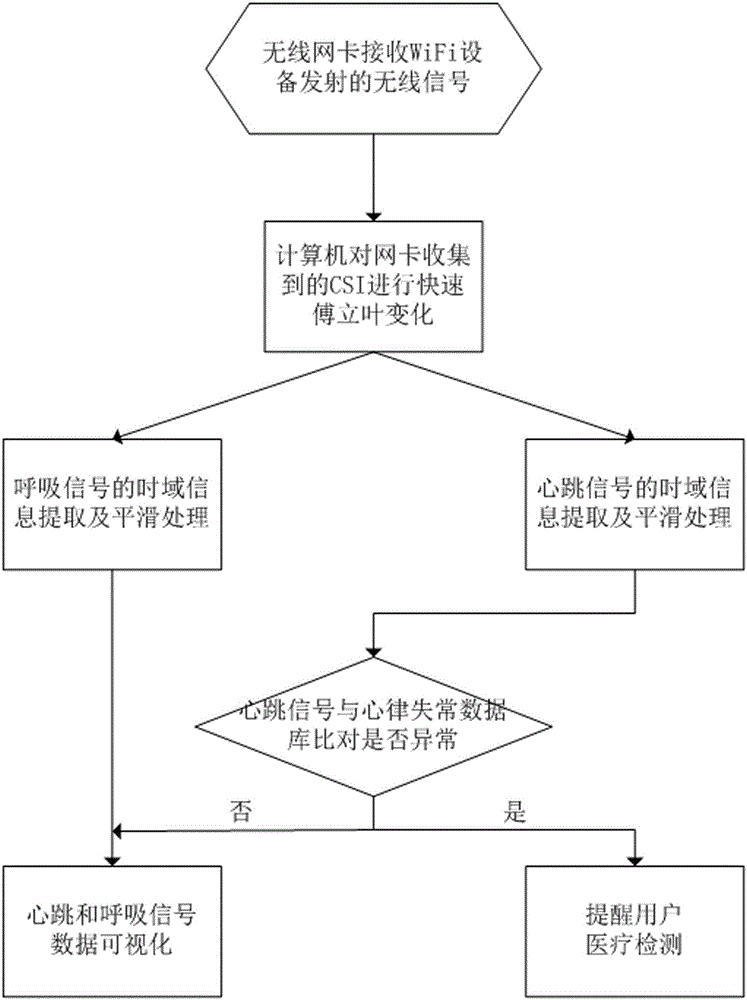Non-invasive breath and heartbeat detection implementation method based on CSI (channel state information) signal strength in WiFi
A non-invasive, heartbeat detection technology, applied in the evaluation of respiratory organs, measuring pulse rate/heart rate, etc., can solve the problem that non-invasive "environmental perception technology does not apply human breathing and heartbeat detection"
- Summary
- Abstract
- Description
- Claims
- Application Information
AI Technical Summary
Problems solved by technology
Method used
Image
Examples
Embodiment Construction
[0012] according to figure 1 As shown, a non-invasive breathing and heartbeat detection method based on CSI signal strength in WiFi includes the following steps:
[0013] Collect CSI curves and perform fast Fourier transformation on the collected CSI curves: different objects including furniture, walls, and human bodies will have an impact on the CSI signal strength. Commonly used WiFi devices in the home can send wireless signals, and these wireless signals will pass through walls, furniture, etc. , The reflection of the human body. Commonly used computers are equipped with wireless network cards, wireless network cards can receive wireless signals, and the computer can analyze the rich information in CSI, including the signal amplitude and signal phase information on multiple subcarriers; equipped with IEEE802.11 standard A wireless network card can obtain one set of CSI curves from each received data packet, and the computer performs fast Fourier transform (FFT) on one set...
PUM
 Login to View More
Login to View More Abstract
Description
Claims
Application Information
 Login to View More
Login to View More - R&D
- Intellectual Property
- Life Sciences
- Materials
- Tech Scout
- Unparalleled Data Quality
- Higher Quality Content
- 60% Fewer Hallucinations
Browse by: Latest US Patents, China's latest patents, Technical Efficacy Thesaurus, Application Domain, Technology Topic, Popular Technical Reports.
© 2025 PatSnap. All rights reserved.Legal|Privacy policy|Modern Slavery Act Transparency Statement|Sitemap|About US| Contact US: help@patsnap.com

